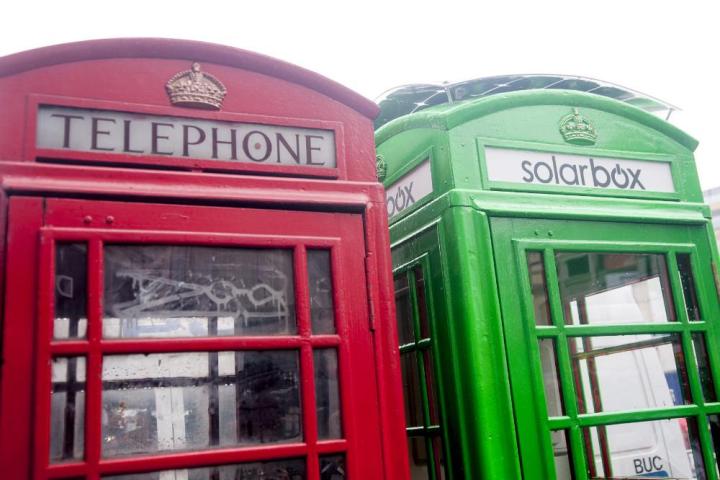
Kiosks on the streets of London have been transformed into everything from libraries (albeit very small ones) to ATMs. Look around enough and you’ll also find gardens inside some, and even shrines.
The latest initiative to breathe new life into the outmoded phone booths, which first appeared on the streets of the UK in 1926, involves the very device that’s made them redundant – the mobile phone.
Aware that handset batteries have a habit of draining away more quickly than we’d like, entrepreneurs Harold Craston and Kirsty Kenny came up with the idea of converting the booths into solar-powered charging stations.
Painted green to distinguish them from the thousands of red kiosks that still dot the city, smartphone owners who step inside a ‘Solarbox’ to give their battery a quick boost will find a variety of charger connectors, as well as a screen showing ads while they make use of the free service. Power comes via a 150-watt solar panel built into the roof of the kiosk.

Of course, anyone who’s ever used one of these famous red phone kiosks will be aware they can occasionally smell like someone’s used it as a toilet (that’s because they have). In an effort to keep the Solarboxes smelling of roses, a maintenance team will clean each one daily. They’ll also be locked up every evening at 11.30pm to prevent late-night drinkers with a full bladder from using them for discharging rather than charging.
The Solarbox picked up second prize in the Mayor of London’s Low Carbon Entrepreneur of the Year award earlier this year and also won the London School of Economic’s Emerging Entrepreneur of the Year award. The first one launched this week – on Tottenham Court Road in the center of the city – though a further five will be rolled out in the coming months.
[Source: Solarbox / BBC] [Images: GLA]


